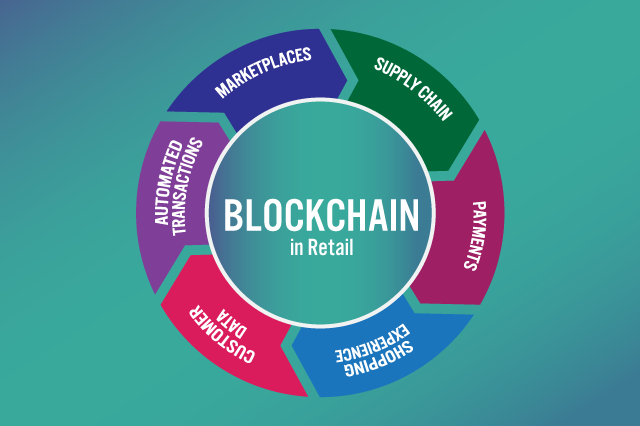The internet has always been a space of continuous evolution, and the latest shift comes with the emergence of Web3. Unlike its predecessor, Web2, which brought us social media, cloud computing, and user-generated content, Web3 introduces decentralization, blockchain technology, and token-based economies. For businesses operating within the Web2 framework, this transition presents both challenges and opportunities. Understanding this shift is crucial for staying relevant in an increasingly decentralized digital landscape.
Understanding Web2 vs. Web3
Before exploring the implications, it’s important to distinguish between Web2 and Web3.
Web2, the current iteration of the internet, is characterized by centralized platforms where data is controlled by a few large corporations. Think Facebook, Google, and Amazon—companies that collect user data to fuel targeted advertising and monetization. Users may create content, but they don’t truly own it. The business models revolve around data aggregation, ad revenue, and platform dependency.
Web3, on the other hand, is built on blockchain technology, emphasizing decentralization. It shifts power back to users through ownership models enabled by cryptocurrencies, non-fungible tokens (NFTs), and decentralized applications (dApps). Instead of data being stored on centralized servers, it’s distributed across a peer-to-peer network, reducing reliance on intermediaries. Smart contracts automate transactions without third-party oversight, and users retain control over their digital identities.

How Web3 Disrupts Traditional Web2 Business Models
For Web2 businesses, the rise of Web3 means rethinking existing strategies. Here’s where the disruption occurs:
1. Data Ownership & Privacy
Web2 companies thrive on collecting and monetizing user data. With Web3, users can store data in decentralized networks, reducing the ability of companies to profit from personal information. Blockchain-based identity solutions, like Self-Sovereign Identity (SSI), allow individuals to control who accesses their data, potentially making targeted advertising less effective—or even obsolete.
2. Monetization Shifts
Instead of relying solely on ad revenue, Web3 introduces new monetization avenues. Creators can tokenize their work, selling digital assets directly to consumers without middlemen. For instance, musicians can release albums as NFTs, ensuring they receive royalties automatically via smart contracts. Businesses that adapt to these models may find new revenue streams, while those that don’t risk losing market share.
3. Decentralized Finance (DeFi) & Payments
Web2 e-commerce relies on payment processors like Stripe and PayPal, which take fees and control transaction flows. DeFi platforms offer peer-to-peer financial services, reducing costs and increasing efficiency. Businesses integrating crypto payments or DeFi lending could benefit from faster settlements and broader customer access.
4. Community-Driven Governance
Many Web2 companies operate under top-down leadership, whereas Web3 embraces decentralized autonomous organizations (DAOs). These are community-governed entities where stakeholders vote on decisions. Brands that adopt DAO structures may foster stronger user loyalty, as customers become co-owners with a voice in product direction.
Opportunities for Web2 Businesses to Adapt
While Web3 poses challenges, it also presents growth opportunities for forward-thinking businesses. Here’s how they can pivot:
1. Hybrid Models
Not every company needs to go fully decentralized. A hybrid approach—where businesses integrate Web3 elements while maintaining their existing infrastructure—can ease the transition. For example, Twitter’s experimentation with NFT profile pictures shows how Web2 platforms can incorporate Web3 features without overhauling their entire system.
2. Tokenization & Loyalty Programs
Brands can issue loyalty tokens on blockchain networks, rewarding customers in ways that enhance engagement. Starbucks’ Odyssey program blends NFTs with rewards, offering exclusive experiences to token holders. This approach keeps users invested in the brand.
3. Enhanced Security & Transparency
By leveraging blockchain, businesses can improve supply chain transparency. Luxury brands like LVMH use blockchain to verify product authenticity, combating counterfeits. Smart contracts can also automate compliance, reducing fraud risks.

4. Embracing Interoperability
Web3 promotes cross-platform compatibility, allowing assets to move seamlessly between ecosystems. Companies building interoperable solutions (such as gaming platforms where in-game items are transferable across different environments) will have a competitive edge.
Potential Challenges & Risks
Transitioning to Web3 isn’t without hurdles. Some key concerns include:
Regulatory Uncertainty
Governments worldwide are still shaping policies around cryptocurrencies and decentralized tech. Businesses must navigate evolving regulations to avoid legal pitfalls.
User Experience Barriers
Web3 applications often require familiarity with digital wallets and private keys, which can intimidate mainstream users. Simplifying onboarding is essential for mass adoption.
Scalability Issues
Blockchain networks face congestion and high fees during peak times. Solutions like layer-2 scaling and alternative consensus mechanisms are emerging, but businesses must choose the right infrastructure.
Final Thoughts
The propagation from Web2 to Web3 is more than a technological upgrade, it’s a fundamental reimagining of how digital interactions work. For businesses, ignoring this evolution could mean falling behind, but embracing it thoughtfully opens doors to innovation, stronger customer relationships, and new economic models. The key lies in balancing legacy systems with decentralized solutions, ensuring a smooth transition into the next era of the internet.
For those willing to explore, the future of business in Web3 is not just about survival, it’s about thriving in a more open, user-centric digital world.







